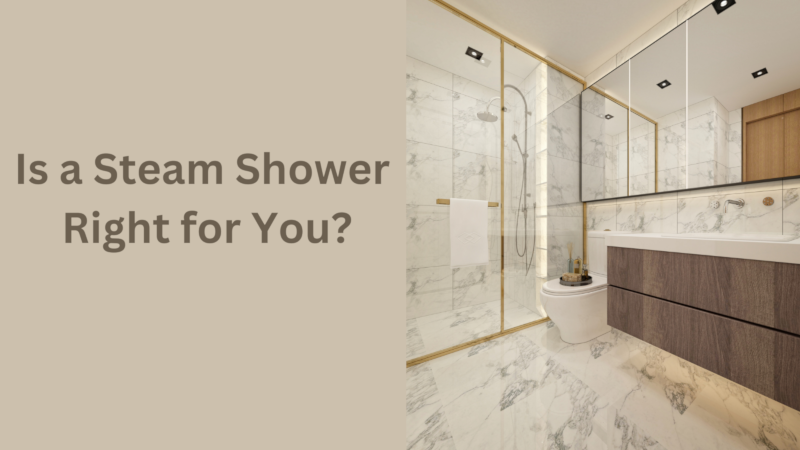Many people think of steam showers as a luxury confined to spas, high-end gyms, or mansions. While they certainly feel luxurious, there are other reasons to consider a home steam shower, and installing one doesn’t have to break the bank.
Why consider a steam shower?
A Long History of Use
Heat therapy, including steam and sauna, has been used through the centuries to promote better health. If you are wondering how far back humans have been using heat to improve their health and well-being, a discovery in 2018 sheds some light on that. At a site in Yorkshire, England, archeologists uncovered a 4,000-year-old “woodhenge,” a wooden circle that some believe was used as a sauna. The ancient Greeks and Romans also used steam baths. Both therapeutic and spiritual rituals involved the use of steam for healing and ceremony.
Potential Health Benefits
Today, modern science has evidence to suggest steam therapy may have both mental and physical health benefits. Trusted health information website WebMD cites several potential ways steam therapy can promote better health, including:
Easing Congestion
If you’ve ever had a bad cold, with congestion in your lungs, you might have been told to breathe in steam from a bowl of hot water or to take a hot shower. That’s because steam loosens congestion from the lining of your throat and lungs. It can also alleviate the labored breathing of asthma or croup.
Soothing Sore Muscles and Joints
Steam heat has been used for centuries as a way to treat sore muscles and joints, relax the body and quiet the mind.
Reducing Inflammation
There is some evidence that heat therapy can reduce inflammation in the body, which, when chronic, is a significant cause of death and disability worldwide.
Promoting Cardiovascular Health
Steam heat may also have benefits for cardiovascular health. A randomized controlled study from India found that steam baths improved cardiovascular function in healthy subjects by improving circulation and reducing blood pressure.
Improving Skin Appearance
The pore-opening properties of steam can help get rid of buildup from dirt other debris, improving its texture.
What about water use?
Gone are the days of standing beneath the shower head with hot water pouring down for 30 minutes, steaming your entire bathroom. The good news is that, with a home steam shower, you can reap the benefits of steam without feeling guilty about wasting a precious resource.
While a typical 20-minute shower uses 20 to 40 gallons of water, a home steam shower uses only one to two gallons of water in the same time.
What would it take to turn a conventional shower into a steam shower?
There is good news on this front, too. Depending on your budget, space, and style considerations, you have a number of choices for installing a steam shower in your home.
With few modifications, you can install a complete unit in an existing bathroom. All steam shower units run from floor to ceiling to contain the steam. Most of them are made with fiberglass on three sides and fronted with glass doors. Others come with beautiful tempered blue glass on all four sides. You can find an all-in-one model as compact as 32″L x 32″W x 85″H, with all the amenities.
Or you can choose to do a custom bathroom redesign. That requires ripping everything out, to provide access to insulate the walls, both to contain moisture and better regulate temperature. Once that is complete, the interior walls of the shower can be retiled, using porcelain, ceramic marble, or glass.
Whether you choose an all-in-one, or a custom design, you’ll want to ensure that the steam stays inside the enclosure to prevent mold and mildew. Your installation professional will ensure your unit doesn’t bathe the rest of your bathroom in steam.
Steam Shower Extras
The list of options to include with your steam shower is long and tempting. Aside from the necessary steam generator and ventilation fan, you can get everything from acupressure water body jets to a handheld shower head or rainfall shower head, to mood lighting, built-in FM radio, or Bluetooth speaker, an ozone sterilization system, and a whole lot more.


